Infrared Thermal Imaging System on a Mobile Phone
Abstract
:1. Introduction
2. Digestion on Evolution of Thermal Imaging System
2.1. The Evolution History of Thermal Imager
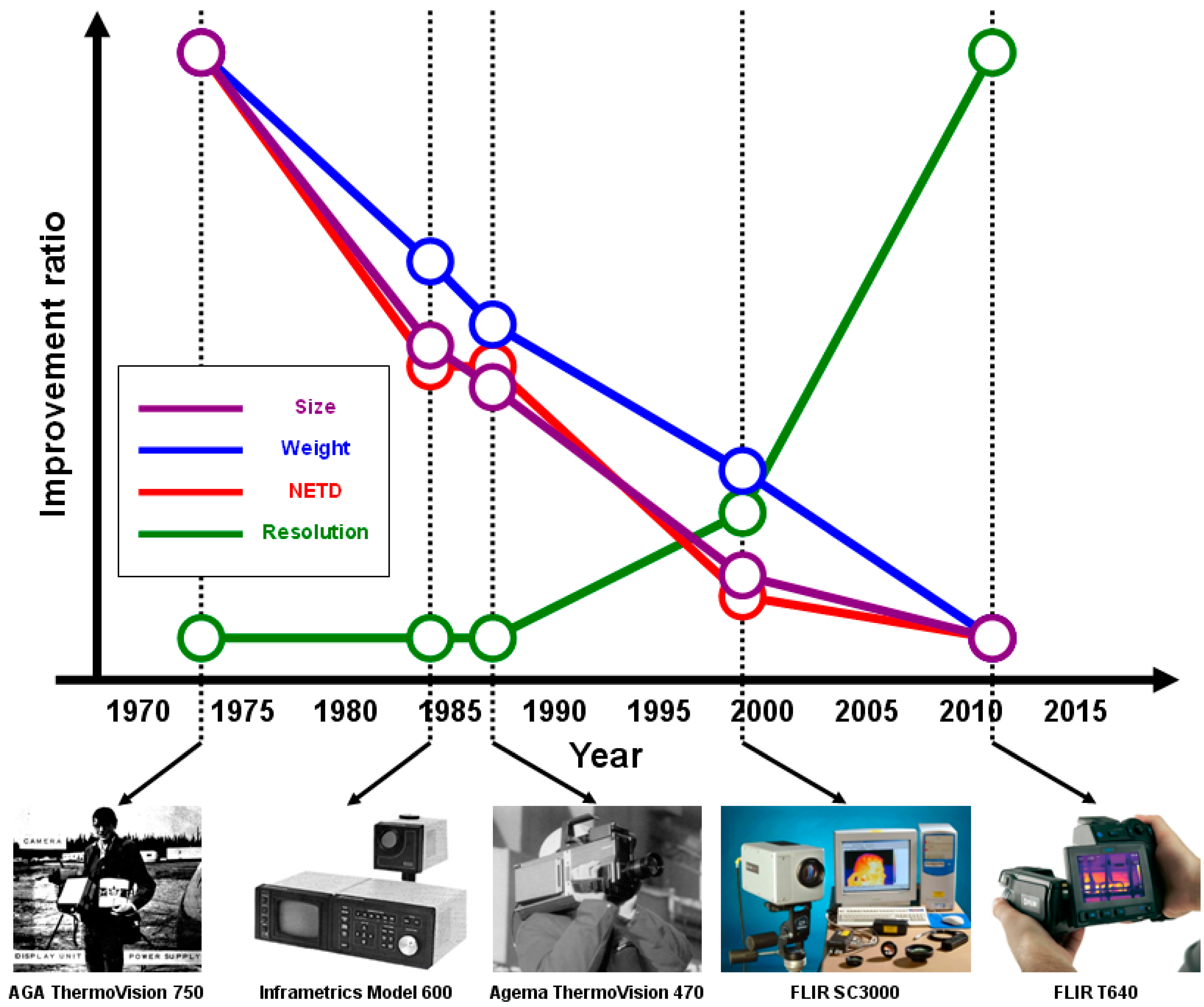
2.2. Low-Cost Pursuit
3. Experimental Setup
3.1. The System Overview of MTIS
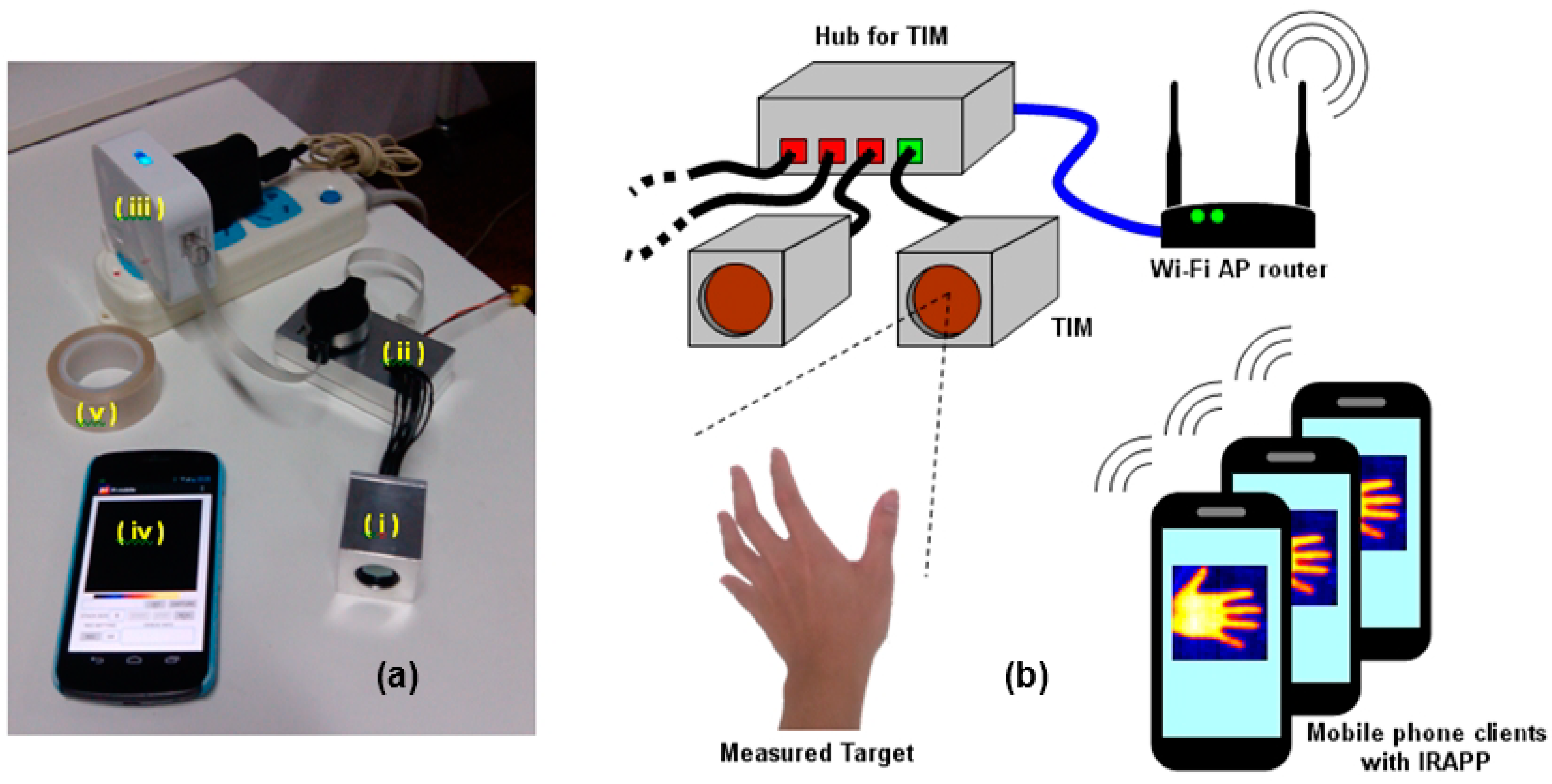
3.2. TIM Development

3.3. IRAPP Development
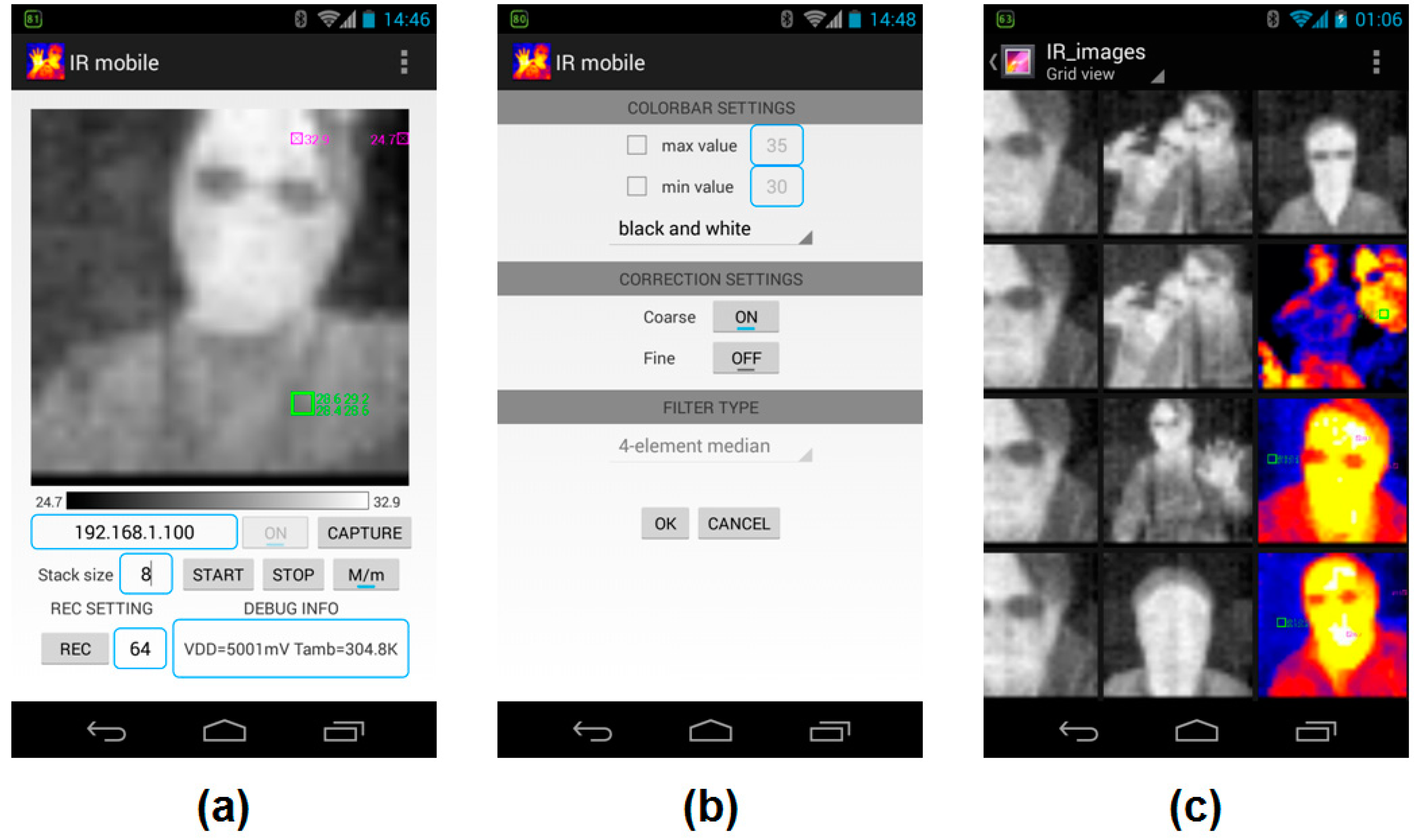
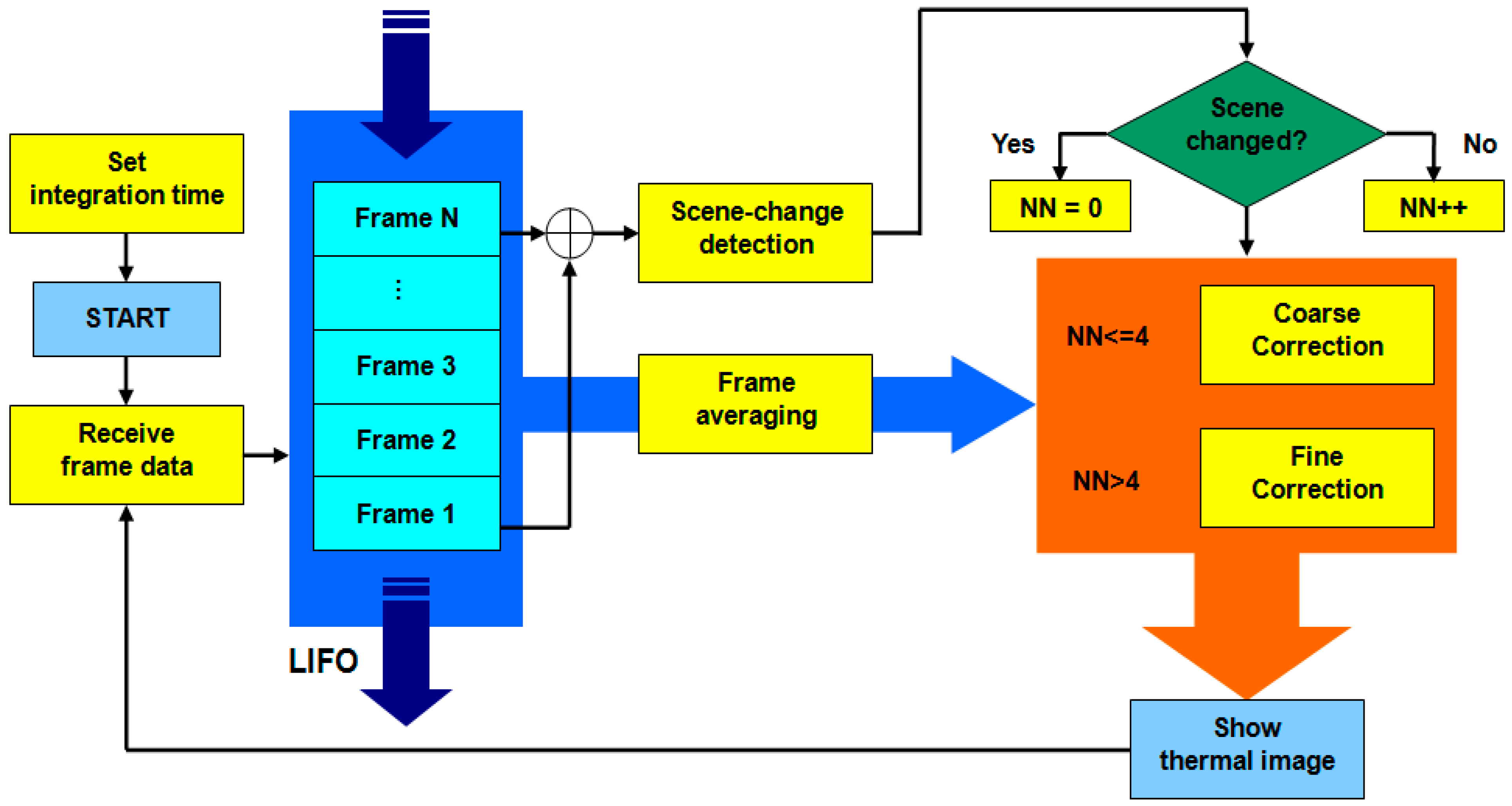
4. Experimental Results
4.1. Performance Overview
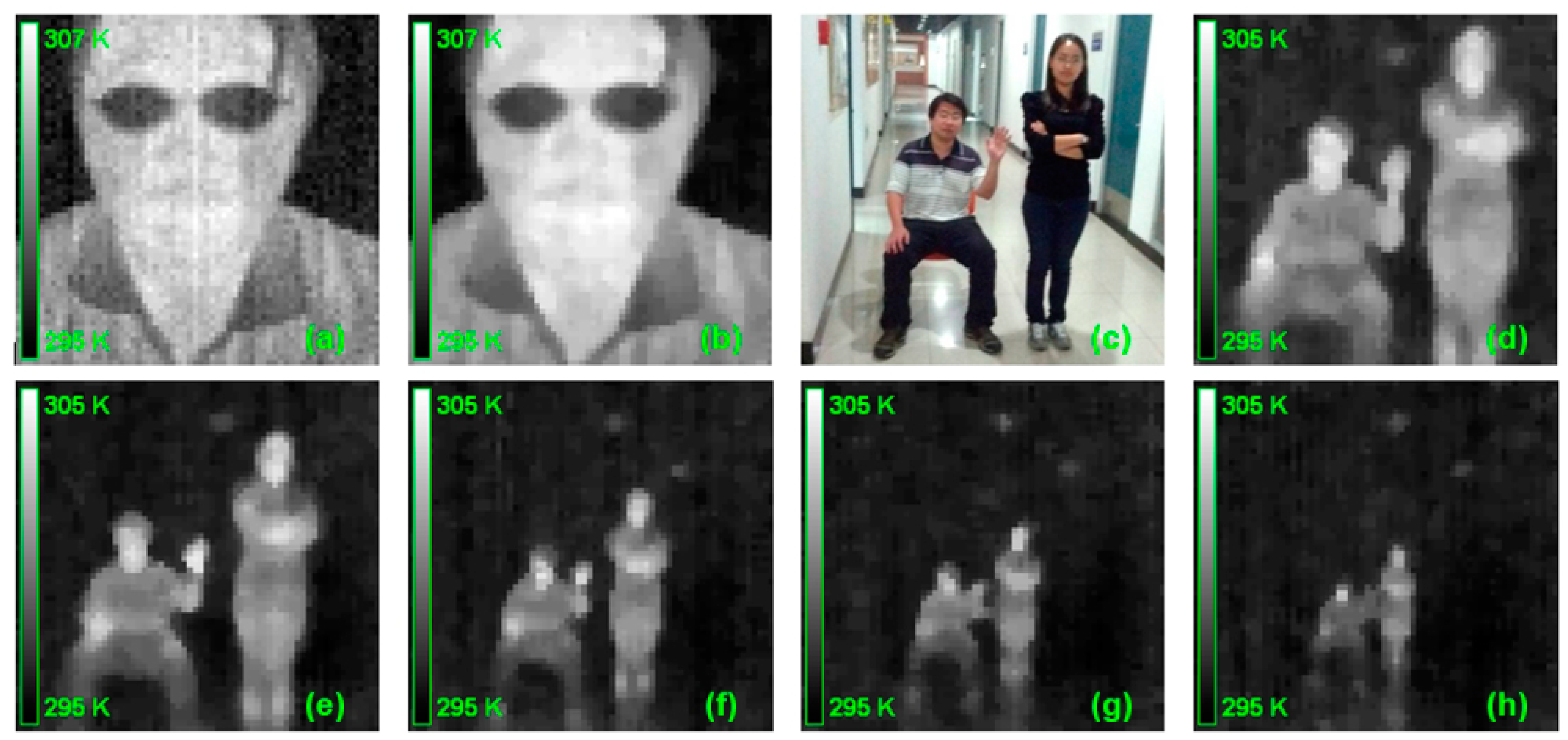
| Distance | Sensitivity | Specificity | Accuracy |
|---|---|---|---|
| 2 m | 1.000 | 1.000 | 1.000 |
| 3 m | 1.000 | 0.857 | 0.929 |
| 4 m | 0.929 | 0.714 | 0.821 |
| 5 m | 0.714 | 0.571 | 0.643 |
| 6 m | 0.643 | 0.500 | 0.571 |
| 7 m | 0.429 | 0.500 | 0.464 |
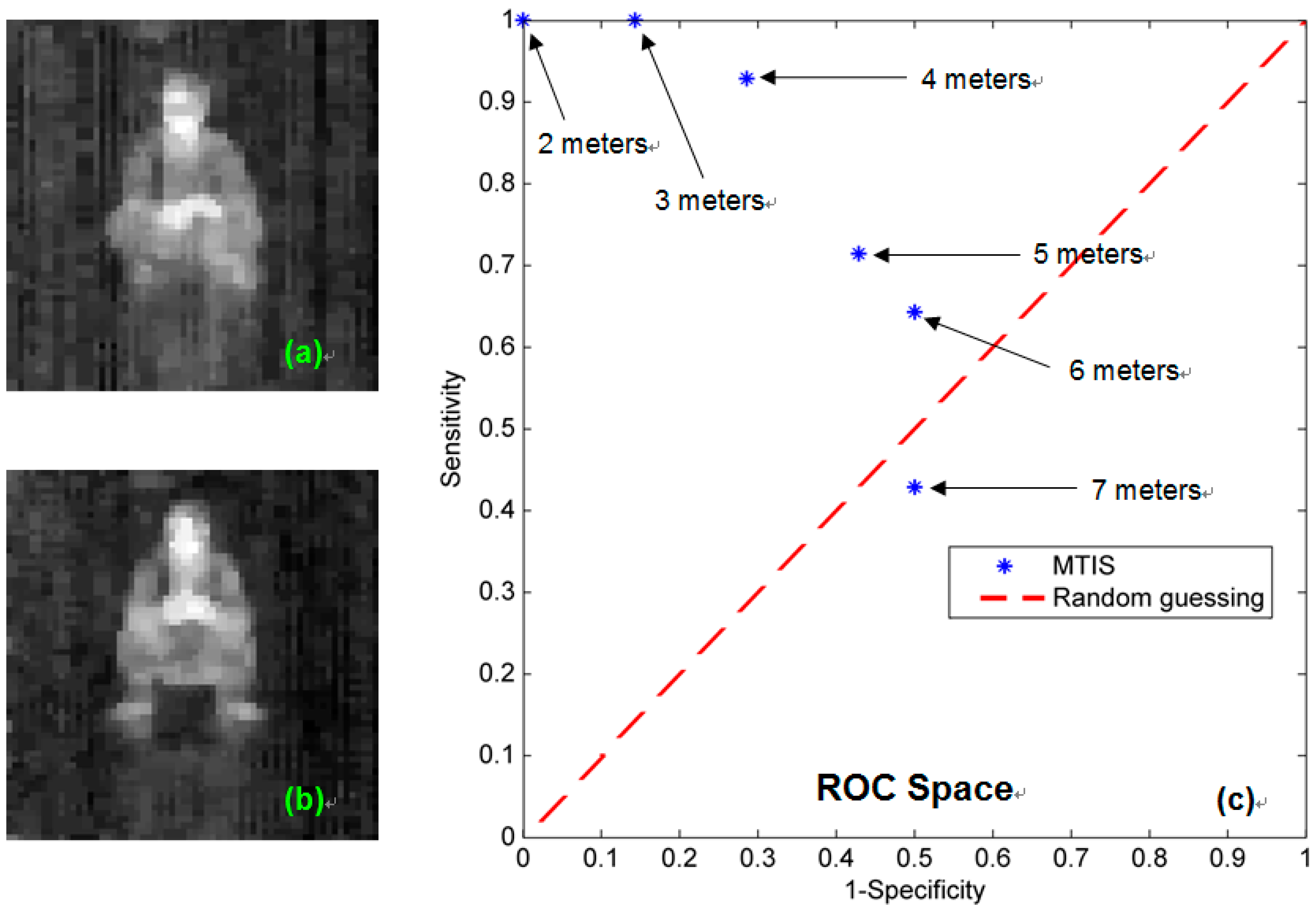
4.2. NETD Behavior
| Integration Time | NETD (mK) |
|---|---|
| 8 frames | 302.52 |
| 16 frames | 144.19 |
| 32 frames | 99.41 |
| 64 frames | 70.25 |
4.3. MRTD Behavior

5. Discussion
| MTIS | HIOKI 3460 | IRI 1011 | FLIR E4 | |
|---|---|---|---|---|
| Detector | Thermopile | Thermopile | Thermopile | Microbolometer |
| Resolution | 64 × 62 | 8 × 8 | 16 × 16 | 80 × 60 |
| Range (°C) | −20 to 300 | −50 to 1000 | −10 to 300 | −20 to 250 |
| NETD (mK) | 300 | N/A | 300 | 150 |
| Dimension (mm) | 36 × 36 × 44 | 165 × 55 × 123 | 120 × 125 × 80 | 244 × 95 × 140 |
| Weight (g) | <200 | 700 | 600 | 575 |
| Price (USD) | <500 * | 700–900 ** | 800–1000 ** | 1200–1800 ** |

6. Conclusions
Acknowledgments
Author Contributions
Conflicts of Interest
References
- Niederleitner, J. Detecting Holdover Fires with the AGA Thermovision 750 Infrared Scanner; Northern Forest Research Centre: Edmonton, AB, Canada, 1986; pp. 3–7. [Google Scholar]
- Lyon, B.R.; Orlove, G.L. A brief history of 25 years (or more) of infrared imaging radiometers. Thermosense Xxv 2003, 5073, 17–30. [Google Scholar]
- He, Y.Q.; Jin, W.Q.; Liu, G.R.; Gao, Z.Y.; Wang, X.; Wang, L.X. The modulate chopper technique used in pyroelectric uncooled focal plane array thermal imager. Adv. Mater. Devices Sens. Imaging 2002, 4919, 283–288. [Google Scholar]
- Dai, J.; Wang, X.Z.; He, S.W.; Huang, Y.; Yi, X.J. Low temperature fabrication of vox thin films for uncooled ir detectors by direct current reactive magnetron sputtering method. Infrared Phys. Technol. 2008, 51, 287–291. [Google Scholar] [CrossRef]
- Lee, T.S.; Shie, J.S. Feasibility study on low-resolution uncooled thermal imagers for home-security applications. Opt. Eng. 2000, 39, 1431–1440. [Google Scholar] [CrossRef]
- Kruse, P.W. Uncooled IR focal plane arrays. Infrared Technol. Xxi 1995, 2552, 556–563. [Google Scholar]
- Ray, S.F. Scientific Photography and Applied Imaging; Focal Press: Boston, MA, USA, 1999; pp. 46–47. [Google Scholar]
- Scribner, D.A.; Sarkady, K.A.; Kruer, M.R.; Caulfield, J.T.; Hunt, J.D.; Herman, C. Adaptive nonuniformity correction for IR focal-plane arrays using neural networks. Infrared Sens. Detect. Electron. Signal Process. 1991, 1541, 100–109. [Google Scholar]
- Krapels, K.; Driggers, R.; Vollmerhausen, R.; Halford, C. Minimum resolvable temperature difference (mrt): Procedure improvements and dynamic mrt. Infrared Phys. Technol. 2002, 43, 17–31. [Google Scholar] [CrossRef]
- Johnson, J. Analysis of image forming systems. In Proceedings of the Image Intensifier Symposium, Warfare Electrical Engineering Department, U.S. Army Research and Development Laboratories, Fort Belvoir, VA, USA, 6–7 October 1958; pp. 244–273.
- Shaham, Y.J. Two-dimensional recognition range model. Infrared Syst. Compon. II 1988, 0890, 92–94. [Google Scholar]
- De Curtis, M.; Calzolari, F.; Marclano, A.; Cardilli, V.; Barba, G. Comparison between rectal and infrared skin temperature in the newborn. Arch. Dis. Child.-Fetal 2008, 93, F55–F57. [Google Scholar] [CrossRef]
- Moon, R.Y.; Horne, R.S.C.; Hauck, F.R. Sudden infant death syndrome. Lancet 2007, 370, 1578–1587. [Google Scholar] [CrossRef] [PubMed]
- Vanggaard, L. The practical aspects of sleeping systems. In Handbook on Clothing—Biomedical Effects of Military Clothing and Equipment Systems, 2nd ed.; Goldman, R.F., Kampmann, B., Eds.; International Society for Environmental Ergonomics: Loughborough, UK, 2007; pp. 6a-3–6a-4. [Google Scholar]
- Russell, M.J.; Vink, R. Increased facial temperature as an early warning in sudden infant death syndrome. Med. Hypotheses 2001, 57, 61–63. [Google Scholar] [CrossRef] [PubMed]
© 2015 by the authors; licensee MDPI, Basel, Switzerland. This article is an open access article distributed under the terms and conditions of the Creative Commons Attribution license (http://creativecommons.org/licenses/by/4.0/).
Share and Cite
Lee, F.-F.; Chen, F.; Liu, J. Infrared Thermal Imaging System on a Mobile Phone. Sensors 2015, 15, 10166-10179. https://doi.org/10.3390/s150510166
Lee F-F, Chen F, Liu J. Infrared Thermal Imaging System on a Mobile Phone. Sensors. 2015; 15(5):10166-10179. https://doi.org/10.3390/s150510166
Chicago/Turabian StyleLee, Fu-Feng, Feng Chen, and Jing Liu. 2015. "Infrared Thermal Imaging System on a Mobile Phone" Sensors 15, no. 5: 10166-10179. https://doi.org/10.3390/s150510166





